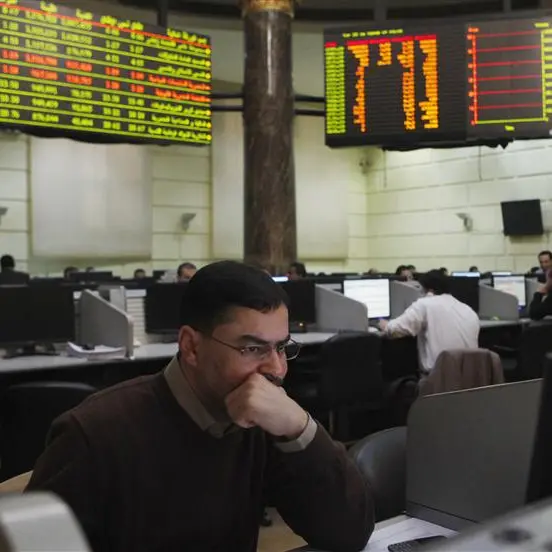PHOTO
Distributed ledger technology hit the headlines in 2008, at the height of one of the worst financial crises in history, when the mysterious Satoshi Nakamoto, whose identity remains a secret to this day, unveiled a new type of electronic transactional technology called blockchain. Many people use the terms ‘blockchain’ and ‘distributed ledger technology’ (DLT) interchangeably. However, they are two slightly distinct processes, with the former best described as an offshoot of DLT.
“A distributed ledger is a database of replicated, shared, and synchronised digital data that is geographically spread across multiple sites. It is typically more centralised and controlled by a small number of ‘trusted’ nodes or participants. Ripple and R3 are two of the best-known players in DLT,” explains Anthony Back, head of content and research at blockchain consultancy Intrepid Ventures, with operations in the Middle East and Hong Kong.
A blockchain, on the other hand, is a specific type of distributed ledger that uses cryptographic signatures and stores all data and transactions in blocks attached to each other in chronological order to create a chain, he says.
“The key difference in blockchain and DLT is that, when a transaction is entered into a public blockchain protocol, that information is forever time-stamped and visible to the network. The transactions are immutable. This represents the single version of the truth. Having this single version of the truth is a very powerful driver and is creating many use cases for the technology.”
Impact on capital markets
DLT and blockchain is a game-changer for many sectors, not least in financial transactions where authentication is key.
“The main benefits are in transparent real-time data, more efficient transactions, post-trade clearing and settlement, automated securities transactions, simpler KYC/compliance, lower brokerage fees and reductions in costs of capital markets dealing and securities servicing,” Back says.
“The ASX Australian Stock Exchange is set to become the world’s first blockchain/distributed ledger technology (DLT)-enabled stock exchange to replace old clearing and settlement processes and to streamline data processing. Many other exchanges are exploring the technology too as the underlying infrastructure for their operations,” he adds.
Back also believes that we could see new services, investment products and innovation being born out of its increased usage.
“Custodianship and security of cryptocurrency has long been a limiting factor in a broader institutional participation. These issues are being solved with some of the larger crypto currency exchanges like Coinbase. The broader implication of the technology will enable new business models and economic drivers to emerge and evolve.”
‘Less secure’
However, as with any nascent technologies, there can be teething problems as the industry develops and attempts to implement various applications. “DLT’s major limitations are that they are less secure due to their centralised nature and lack of cryptographic consensus protocols,” Back remarks.
There are also significant technical design limitations in current blockchain protocols as they do not fit the needs of enterprise and institutions due to the fact that they are not scalable - with current transaction speeds of 10 transactions only per second, for instance.
“They have limited proper governance in place and, most importantly, require highly specialised development expertise to use, although companies like Metabase and EOS have solved some of these problems,” Back adds.
Although the obvious way for investors to get exposure to DLT is through digital currencies, they have proven a volatile investment. Bitcoin’s ups and downs are constantly grabbing media headlines and many cryptocurrencies mooted to be the next big thing are now defunct. Investors should consider the big picture instead and focus on the future applications of DLT and blockchain and how they can invest in its potential.
“The link that blockchain has with cryptocurrencies is paralysing the decision-making processes about adopting blockchain applications argues Muhammed Arafath, executive director at Apla, a blockchain technology company.
Lack of understanding
“This is compounded by many who have little understanding of how the crypto and blockchain spheres are related, making statements denouncing cryptocurrencies and calling for a ban on the technology as a whole. Blockchain is the underlying technology, not a ‘bubble’: it is simply the idea that supports cryptocurrencies,” he adds.
Despite criticism of cryptocurrencies, there is momentum for the technologies that support them. In April 2018, the UAE Government launched the Emirates Blockchain Strategy 2021 with the objective to transfer 50 per cent of government transactions onto the blockchain platform by 2021. “It will help save time, effort and resources and facilitate people to process their transactions at the time and place that suit their lifestyle and work. By adopting this technology, the UAE government expects to save: 11 billion (UAE dirhams, or $3 billion) in transactions and documents processed routinely; 398 million printed documents annually; and 77 million work hours annually,” the strategy document states.
The government says it aims to ensure the digital security of national documents and transactions, and eventually reduce operational cost and accelerate decision-making. For Arafath, DLT is a “foundational” technology that will ultimately benefit every segment of society and the economy.
“Government, administration, education, supply chain will benefit the most before it cuts across all sectors. Blockchain can bring the necessary framework, innovation and flexibility to all these sectors: one fourth of the supply chain costs and 60 per cent inefficiencies can be reduced with blockchain,” he argues.
(Reporting by Charlotte Kan; Editing by Michael Fahy)
(michael.fahy@refinitiv.com)
Our Standards: The Thomson Reuters Trust Principles
Disclaimer: This article is provided for informational purposes only. The content does not provide tax, legal or investment advice or opinion regarding the suitability, value or profitability of any particular security, portfolio or investment strategy. Read our full disclaimer policy here.
© ZAWYA 2019




















